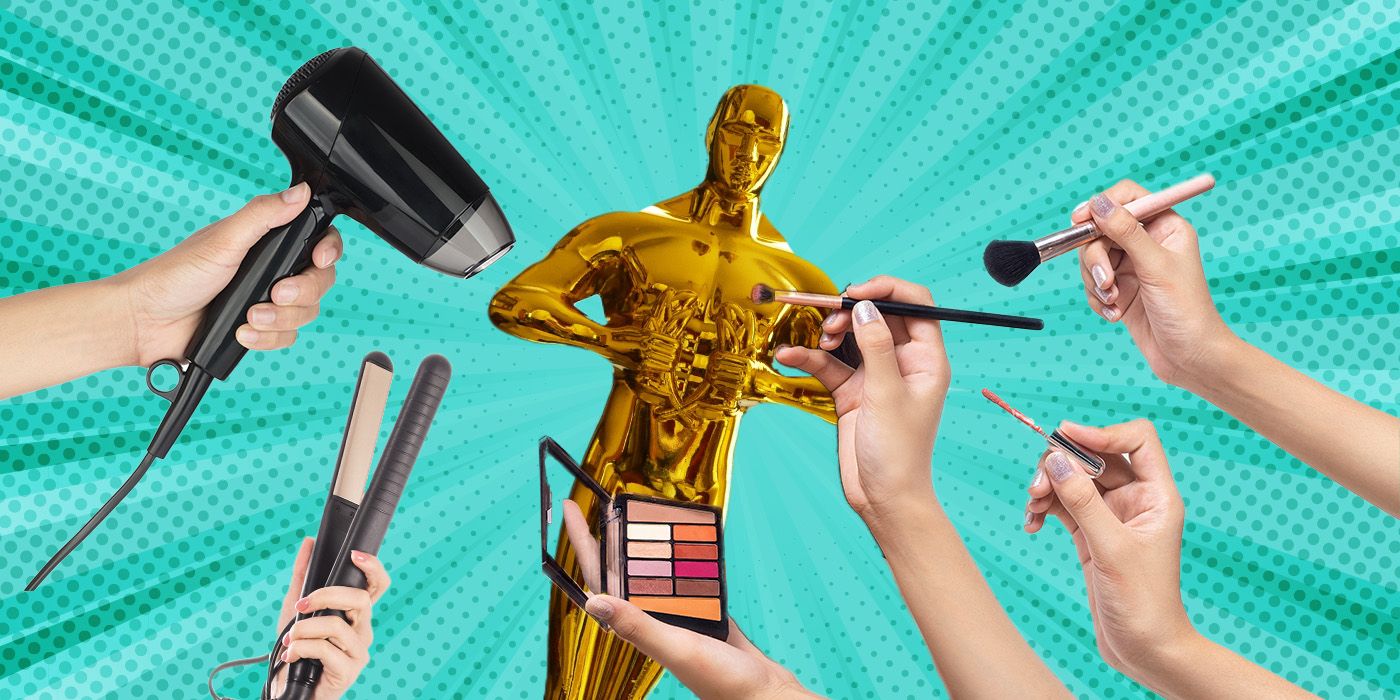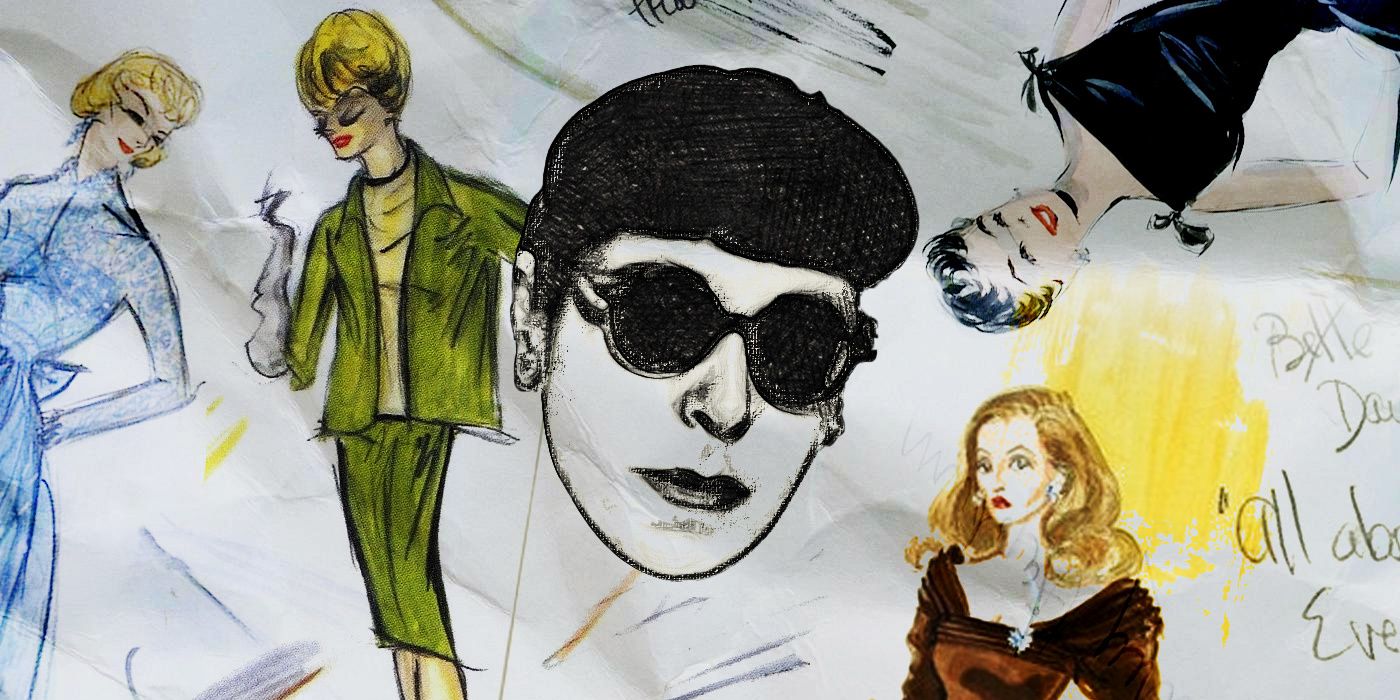The Big Picture
- Edith Head, the most award-winning woman in Oscar history, dressed iconic Hollywood stars and broke barriers for women behind the camera.
- Head’s versatile and striking designs were essential in conveying the power, elegance, and sensuality of the characters she dressed.
- Actresses specifically requested Head both for her designs and for her no-nonsense, intimate consultation process, where Head prioritized the actresses’ goals and desires.
Even if you don’t recognize Edith Head‘s name, you know her work on sight — for several reasons, at that. Pick a famous movie from Hollywood’s Golden Age, and there’s a good chance her costumes adorned the headlining celebrities. A self-made costume designer with a prolific, half-century-long career, her contributions to the medium are inescapably seared into the public consciousness. Audrey Hepburn in Breakfast at Tiffany‘s? You can thank Ms. Head for that melancholic iconography turned party outfit. Barbara Stanwyck in Double Indemnity? That’s the prowling silhouette that defined generations of femme fatales. History’s best actresses didn’t need to say a word to convey power, elegance, or sensuality; Head’s visuals spoke at first glance.
From 1949 to 1973, Head won eight Academy Awards, the most awarded to any woman in the Oscars’ history, and earned 35 total nominations. There wasn’t a genre to which her eye was immune (yes, the woman behind Roman Holiday and Vertigo also did The Ten Commandments, Sunset Boulevard, and The Man Who Shot Liberty Valance), and, to her own attestations, no person — celebrity or otherwise — was beyond her skill to dress. Head broke barriers for women behind the camera with visual language while purposefully remaining as inconspicuous as possible.
Breakfast at Tiffany’s
A young New York socialite becomes interested in a young man who has moved into her apartment building, but her past threatens to get in the way.
- Release Date
- October 6, 1961
- Director
- Blake Edwards
- Cast
- Audrey Hepburn , George Peppard , Patricia Neal , Buddy Ebsen , Martin Balsam , José Luis de Villalonga
- Runtime
- 115
- Writers
- Truman Capote , George Axelrod
How Edith Head Became an Icon
Edith Head’s Oscar wins might span 24 years, but they were as consistent as, if you’ll allow the modern metaphor, Taylor Swift winning a Grammy Award. Head secured back-to-back trophies for Best Costume Design (Black & White and Color) from 1949 to 1951 for The Heiress, All About Eve, Samson and Delilah, and A Place in the Sun. In 1953 and 1954, two of her three Audrey Hepburn collaborations, Roman Holiday and Sabrina, claimed the prize. 1960 was The Facts of Life, with her final win arriving 13 years later for The Sting. Her notable nominations include To Catch a Thief, Funny Face, The Man Who Shot Liberty Valance, and The Man Who Would Be King.
That’s one heck of a resume for a woman in Hollywood. An active worker up until her death in 1981, Head dubbed her golden statuettes “my children” and deliberately decked out her office with their grandeur. The flex, in Head’s words, “put difficult actresses and actors in a more mellow mood.” Although she preferred to dress innocuously in public, the Edith Head look took on a life of its own (enough so that rumors persist about whether she inspired The Incredibles‘ Edna Mode): sharply cut bangs, shortly cropped hair, glasses, and low-profile suits with wide hemlines. If showing off her Oscar glory emphasized her expertise, then dressing with a demure androgyny so predictable it became her motif, emphasized the glamorous stars she clothed. At home, she was known to rock “wild colors and evening pants, anything I want,” she said, including football jerseys, “but when I’m at the studio, I’m always little Edith in the dark glasses and the beige suit. That’s how I survived.” It was Head’s personal costume, one that kept her safe in a male-dominated industry. She conformed and minimized herself, but wearing professional suits implied dependable competency — nothing frivolous to see here.

The Oscar for Best Makeup and Hairstyling Wouldn’t Exist Without This Film
While special Oscars had been given out beforehand, a dedicated category for makeup and hairstyling didn’t exist before the 1980s.
The fact Head made such strides without an official design education is one of life’s delightful ironies. Initially a romance language teacher with a degree from Los Angeles’ Chouinard Art School, Head’s fascination with clothing design (and her disinterest in her job) led her to “borrow some sketches” and submit them in response to a Paramount Pictures job posting. Unethical as it was, it worked. Studio designer Howard Greer hired the young woman despite knowing she had faked her portfolio.
Edith Head’s Designs Took the World by Storm
As an assistant, Head said she was relegated to costuming “the grandmothers, second aunts, animals and men.” Keeping her head down, she dutifully worked her way up the ladder. By 1938, she was the first female “chief costume designer” for a major studio in Hollywood history. Head sewed by hand, having no experience with machines. She knew her way around camera technology; fitting her glasses with blue lenses let her preview a costume in black and white. And she knew the implications of her job description: bringing unattainable fantasy to life. According to Head, “A designer was as important as a star. Dress was part of the selling of a picture.”
By the 1940s and 1950s, Head was styling the biggest icons of her day. Bette Davis, Veronica Lake, Joan Fontaine, Doris Day, Marlene Dietrich, Gloria Swanson, Ginger Rogers, Rita Hayworth, both Hepburns — it’s a veritable chorus line of legends. Head’s multiple collaborations with Alfred Hitchcock, meanwhile, resulted in Ingrid Bergman‘s black dinner gown from Notorious, Grace Kelly‘s ever-shifting Rear Window and To Catch a Thief wardrobes, and Kim Novak in Vertigo. If that weren’t enough, the Guinness World Records credits one of Ginger Rogers’ elaborate Lady in the Dark outfits as history’s most expensive costume. Elizabeth Taylor‘s chiffon ballgown from A Place in the Sun set off a cultural firestorm that partially inspired the 1950s prom dress, an image that remains ubiquitous in American culture. Clearly, Head struck a chord strong enough for audiences to mimic. Women of all ages tried to capture and personally recontextualize the feelings their movie screens conveyed, whether that was an enchanting fantasy or empowered sexuality (and why not both?).
What Made Edith Head Unique?
Despite the temptation to get swept up in billowy chiffon, flowery lace, and sleek fitted suits, Head never intended to revolutionize the industry. She approached each costume from a character-based perspective. Costumes communicate essential information, sometimes subconsciously, sometimes with eye-popping clarity. When you think of Breakfast at Tiffany‘s, what’s the first image that comes to mind? How about Spider-Man or Superman? Moreover, what do those outfits tell you about the person inside them? Head’s instincts always served the story and reflected the situation’s nuance. She called Ingrid Bergman’s black Notorious dress “elegance in the subtlest sense,” which suits a vulnerable spy in a lion’s den. The wistfully youthful Audrey Hepburn of Roman Holiday isn’t the troubled adult of Tiffany‘s, or Funny Face‘s blossoming fashionista. Grace Kelly’s Rear Window socialite carries herself with a royalty her fit-and-flare outfits must match. Kelly’s blue dress from To Catch a Thief drapes with a breezy delicacy befitting a flirtatious debutante. Then there’s Vertigo, where a gray-suited silhouette spawns a lethal obsession (and hides damaging truths about its captive wearer).
Edith Head didn’t want to steal the show. She did so anyway. Although she dressed many famous men (Cary Grant, naturally, as well as John Wayne, Elvis Presley, and Steve Martin), a woman in an Edith Head costume was multifaceted. One must take the prudish Hays Code into account, but she valued allure and magnetism over overt sexualization. Her cuts, fabrics, and fits flatter without making beauty a female character’s defining value. Her women are arresting and dignified, autocratic and attractive, vulnerable and dynamic, and always have agency.
Head’s process behind the camera mattered as much as the on-camera result. Her consultations with her clients set her apart from male designers. According to The Hollywood Reporter, actresses requested Head, or, “as was the case for Bette Davis on All About Eve — insist[ed] on her,” because they appreciated Head’s firm skill and humanizing approach. During a tribute to Head, Vivien Leigh shared, “She would sketch right in front of me. We would discuss the character. She wanted to know how I was approaching the character, so that she could think of things through my eyes as well, and my interpretation of the role.” Tippi Hedren, who Head costumed for The Birds and Marnie, praised her sensibility: “Edith taught me that you not only design to make the person look according to the character, you have to make sure that the person can do the action. Not only did it have to be a dress that people wouldn’t get tired of looking at; it had to be capable of doing all the action.”
Edith Head Changed Hollywood Forever
As Head blazed full steam ahead into her twilight years, she joined Universal after decades spent on the Paramount lot. She seemed to relish her stardom but forever regretted losing out on a ninth Oscar for To Catch a Thief, some of her proudest work. She published three books (The Dress Doctor, How to Dress for Success, and Edith Head’s Hollywood) and “designed for Vogue patterns and airlines.” Following her death in 1981, her career culminated in Steve Martin’s 1982 neo-noir pastiche Dead Men Don’t Wear Plaid. The film, set in the 1940s and using clips of the many actors Head worked with, brings her work full circle. Edith Head could make anything, and did — all while staring out from behind a veneer as cutting as her intuition.
Breakfast at Tiffany‘s is available to stream on Paramount+ in the U.S.
Watch on Paramount+
Source link

